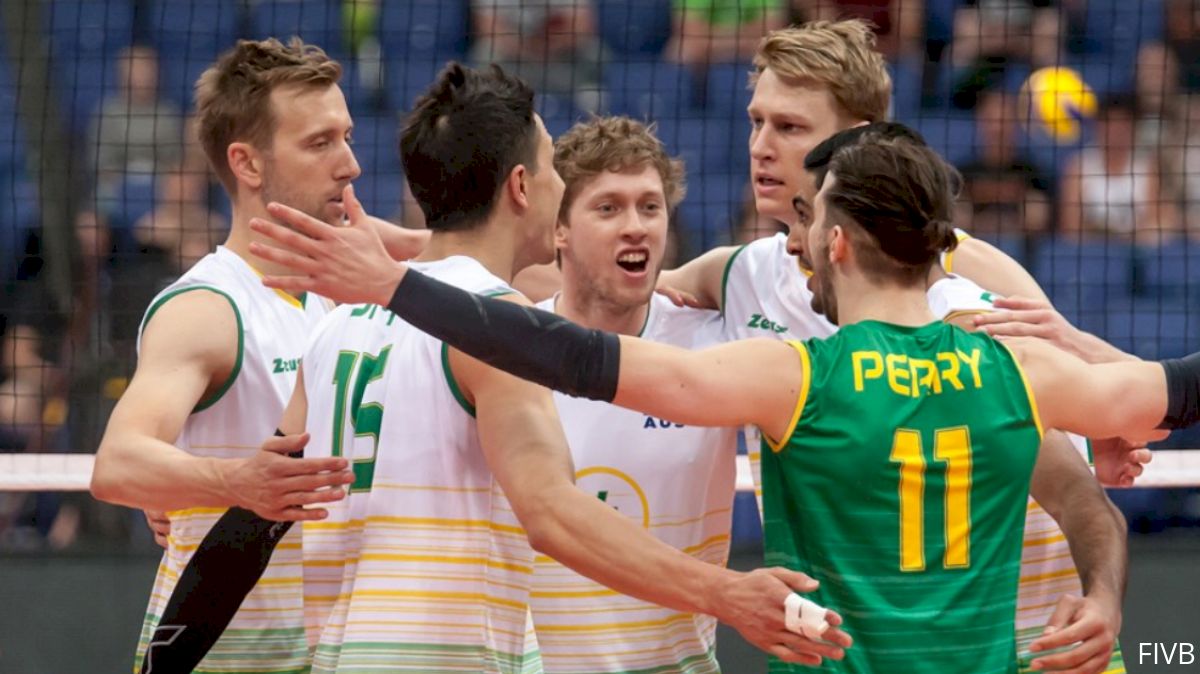2019 FIVB VNL Preview: Australia Men's National Team
2019 FIVB VNL Preview: Australia Men's National Team
Australia will once again be tested as it aims to break into the top 12 of FIVB Volleyball Nations League this time around.

Australia will get another chance to improve and gain more experience at this year’s FIVB VNL 2019, when they take on some of the world’s best in men’s volleyball.
The Aussies came in as challengers at last year’s inaugural tournament but remained a challenger for this year’s edition after a 13th-place finish. Australia will once again be tested as it aims to break into the top 12 this time around.
FIVB VNL 2018 record & stats
Win/loss: 5 / 10
Points: 15
Sets win/loss/ratio: 21 / 35 / 0.600
Points win/loss/ratio: 1236 / 1340 / 0.922
Final position: 13th
What’s new for Australia in FIVB VNL 2019?
The Australian men’s national team is quite young with an average age of 25 years old, albeit they do have some veterans such as team captain Paul Carroll, 32, and Paul Sanderson, 33. So there hasn’t been much movement for the Australian team we saw at the World Championship last year.
Coach Mark Lebedew, who took charge in 2016, is still in the thick of developing this squad and turning them into a more competitive unit.
Australia world ranking: 16 (October 2018)
Australia FIVB VNL 2019 match schedule
Week 1
May 31 at 1:30 PM CT – Poland v Australia
June 1 at 7 AM CT – Brazil v Australia
June 2 at 7 AM CT – Australia v USA
Week 2
June 7 at 6:40 PM CT – Canada v Australia
June 8 at 3:10 PM CT – Serbia v Australia
June 9 at 12:10 PM CT – Australia v Germany
Week 3
June 14 at 12:40 PM CT – Bulgaria v Australia
June 15 at 9 AM CT – Australia v Italy
June 16 at 9 AM CT – Japan v Australia
Week 4
June 21 at 6 AM CT – France v Australia
June 22 at 9 AM CT – Iran v Australia
June 23 at 6 AM CT – Portugal v Australia
Week 5
June 28 at 5 AM CT – Australia v Russia
June 29 at 4 AM CT – Australia v China
June 30 at 1 AM CT – Australia v Argentina
Australia games to watch out for in FIVB VNL 2019
An interesting twist here is Australia’s match-up against the favored team USA early in the competition. The two will battle it out in Poland, where the Australians might get some support from the home crowd considering that Lebedew is currently coaching a club team in the Polish league that has made it through to the semifinals.
Australia’s key matches worth watching would be against teams where, theoretically, they can gain points or win. That includes Bulgaria, China, Canada, Japan, Portugal and Argentina.
Australia provisional roster
Head coach: Mark Lebedew
Liberos: Luke Perry, Malachi Murch, Jackson Holland
Setters: Arshdeep Dosanjh, Harrison Peacock, Nicholas Butler, Jordan Colotti
Middle Blockers: Beau Graham, Steven MacDonald, Travis Passier, Trent O'Dea, Nehemiah Mote, Simon Hone, James Weir, Caleb Watson, Conal Tain Mcainsh
Wing Spikers (Outside & Opposite Hitters): Paul Carroll, Paul Sanderson, Thomas Edgar, Max Staples, Jordan Richards, Samuel Walker, Luke Smith, Thomas Douglas-Powell, Lincoln Williams, Regan Fathers, Curtis Jeffrey Arthur Stockton, Elliott Viles, Ethan Garrett, Thomas Heptinstall
Average age: 25.1 (10th oldest)
Average height: 198.8 (3rd tallest)
Australia players to watch in FIVB VNL 2019: Paul Carroll, Luke Perry, Jordan Richards
Paul Carroll, who plays opposite, is one to watch on the Australian side. He’s the leader of this team and has been around since 2005. He’s backed up by wing spiker Jordan Richards, 25, who was the team’s top scorer during last year’s competition with 118 points.
Meanwhile, libero Luke Perry, 23, was among the Best Diggers during the preliminary round of FIVB VNL 2018 and should be fun to watch as well. Perry also won Best Libero during the 2016 1st World Olympic Qualification Tournament.
The bottom line: More international exposure for Australia
Australia’s men’s national team is still developing at this stage. They’ve had some success in Asia, such as winning gold at the 2007 Asian Championship, but it’s been few and far in between for them.
The Aussies appeared in six world championships since 1982 and only recently had their best result at 14th place, through to the second round, last year. Its best Olympic result was an eighth-place finish during their debut in 2000. So it’s still a long way to go before this team is ready to slug it out with teams on the upper end of the bracket.
The country’s location is part of the struggle since it often competes on the Asian continent, where there aren’t many top-quality rivals compared to other parts of the world like Europe or the Americas. That’s why its continued participation at tournaments like the FIVB VNL would be highly beneficial to its growth and future.
The key for Australia at FIVB VNL 2019 is to maximize the opportunity to be exposed to world-class teams like USA, Poland, Brazil, Serbia and Russia, among others. In time, this team could develop into legitimate contenders as well.
What is a realistic FIVB VNL projection for the Australia men’s team?
After a second straight year of staying on as challengers at FIVB VNL, it would be ideal if Australia manages to break into the top 12. It’s not impossible, given its shown the ability to take down some of the mid-tier teams, but it will take a lot of work.
Of course, it should avoid finishing in last place at all costs.
How to watch Poland in FIVB VNL 2019
Watch the 2019 FIVB Volleyball Nations League in its entirety LIVE on FloVolleyball.